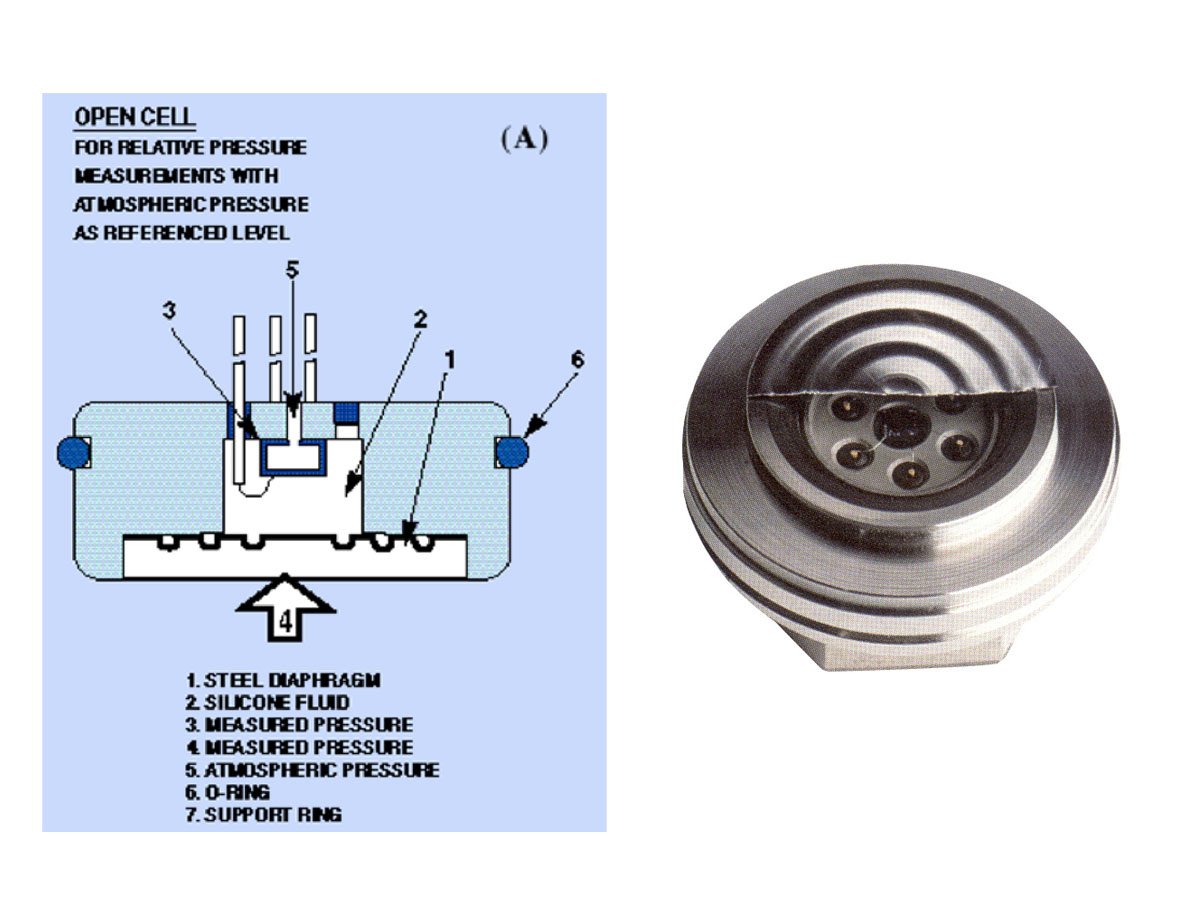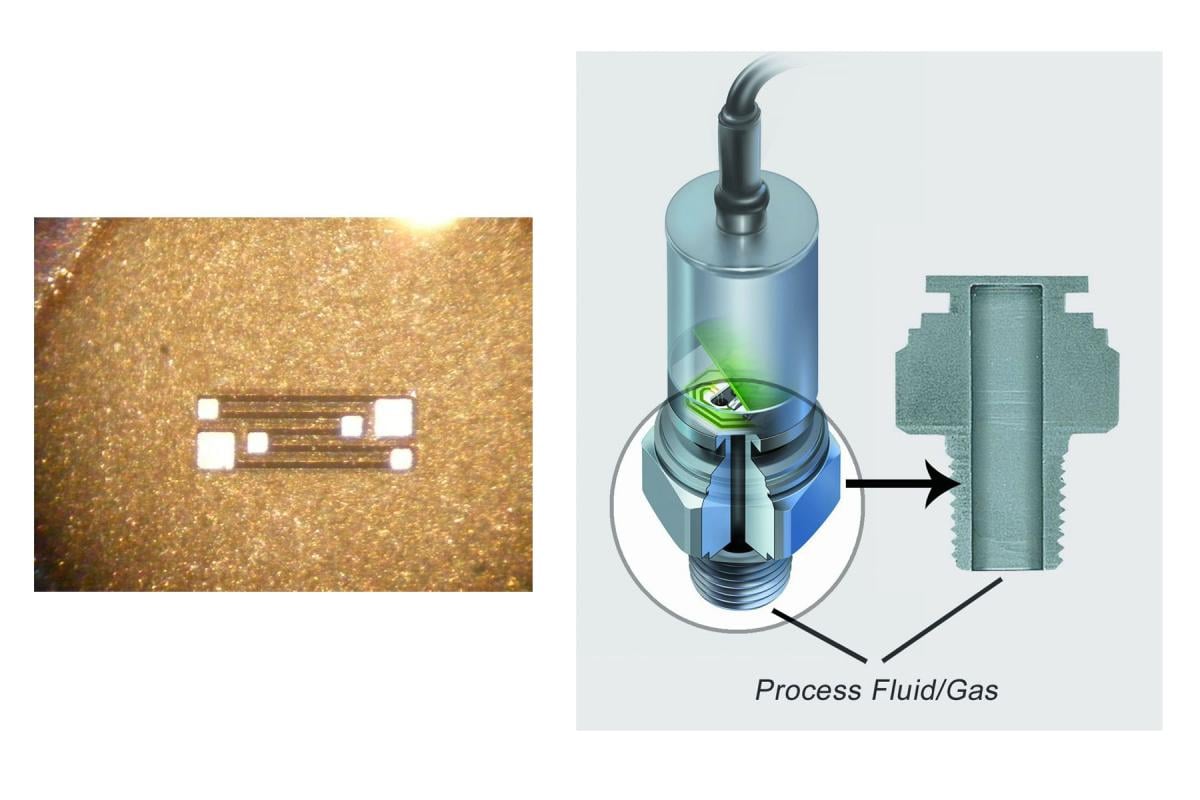Micro Electro-Mechanical Systems Forge Advancements and Use of Pressure Sensor Technology

By Karmjit Sidhu
Vice President, Product Development,
American Sensor Technologies
http://www.astsensors.com
Over the past 30 years, technological advancements have driven great changes in the communications, consumer electronics, medical, automotive as well as the leisure industry During that time, sensor technology experienced substantial growth, both in use and development, thanks in large part to the implementation and large-scale commercialization of Micro Electro-Mechanical Systems or MEMs.
In recent years, MEMs technology has led the development of miniature sensors such as accelerometers, gyros, tilt and pressure devices. From cars and computers to sprinkler control systems and satellites, MEMs sensors serve as important components in safety, control and feedback applications.
Defining MEMs
MEMs is a process technology that enables the combination of sensors, actuators, mechanical components, and to a certain extent, electronics on one silicon or germanium base. Typically, micro-fabrication is used to apply the various elements to a silicon or germanium wafer.
MEMs offers various advantages over traditional electro-mechanical sensing technologies including:
• Smaller package size
• Lower cost
• Large-scale integration
• Lighter weight
• Less power consumption
• Wider operating temperature
• Higher output signal
• Greater complexity
As the need for sensors increases in many applications, MEMs plays a significant role in new sensor developments. Today, MEMs is increasing used as the process technology for developing accelerometers, gyros, tilt sensing, pressure, biomedical, temperature and flow sensors. The following discusses how MEMs is used in developing today’s pressure sensors.
MEMs-Based Pressure Sensors
Pressure sensing is the second largest sensor market after temperature, representing a $15 billion global business that is growing every year. By reducing package size, cost and weight, MEMs significantly drove volume and demand for pressure sensors in recent years. For example, while only expensive cars incorporated some pressure sensors thirty years ago, hundreds are used per car today.
MEMs in pressure sensing technology can be divided into three areas of media compatibility:
• Benign and non-corrosive dry gases
• Non corrosive and slight levels of humidity
• Corrosive gases and liquids
These three areas of media dictate pressure sensor size, package and cost structure. Below is a review of these three media areas, identifying the different sensor packages needed for the MEMs device to operate in specific media while providing reliable and precision output as well as the markets using these different MEMs-based pressure devices.
1. Benign and non-corrosive dry gases
This environment requires the least amount of sensor packaging and lowest level of cost structure. Here, the MEMs device is mounted directly to a substrate and exposed to the media. The market for this pressure device is very limited to medical and industrial, non-corrosive dry gases.
2. Non-corrosive gases with slight humidity
For these applications, a protective gel is placed on top of the MEMs device for top pressure loading or isolated silicon or germanium membrane. The markets requiring this type of media protection include HVAC, medical devices, such as disposable blood pressure sensors, and clean water management. In addition to these large, cost-driven markets, opportunities are growing related to reducing energy consumption.
3. Corrosive gases and liquids
To operate in these applications, complex and costly sensor packages isolate the MEMs device from the media. Due to media corrosiveness, the sensor incorporates corrosion- resistance materials that tend to increase the sensor package size and cost. This application area represents the largest of use for pressure sensors, showing excellent growth opportunities in markets such as alternative energy (H2, biomass), environmental control, power generation, oil & gas processing, sub sea & marine, transportation and process controls.
There are two types of sensor packages for MEMs devices handling corrosive media:
• Traditional oil-filled, media-isolated MEMS
• New one-piece hermetic design, free from filled fluids, welds and O-ring seals.
Traditional Oil-filled Media Isolated MEMs
This sensor package employs a very thin metallic membrane filled with oil to isolate the media from the real world. The isolation diaphragm is normally 0.001" thick for pressures up to 1000PSI and 0.0015” thick for pressures up to 10000PSI. Oil used to fill the membrane is typically some grade of silicone oil. Olive oil or non-toxic oil can be used as an alternative fill; however, sensor performance will not be the same as when silicone oils are used.
The sensor package, as shown in Fig.1, is complex with welded lines that must remain reliable over time when handling pressure spikes and overloads. When used in higher than specified pressure ranges, the oil will become compressible and cause the diaphragm to travel beyond its design limits, leading to failure and eventual sensor rupture. The isolation diaphragm is typically constructed of corrosion resistance metal, selected to offer the best performance over time and welded to the pressure adapter and housing.

Fig. 1. Sensor construction (left) showing the key items of the MEMs-based pressure sensor. On right picture, the MEMs sensor die can be seen in the middle of the glass to metal header.
Direct Bonding of MEMs to Metallic Diaphragm
On the rise for the past 10 years, this new concept of bonding MEMs devices, as shown in Fig.2 (a), eliminates leak paths through the use of a full hermetic seal that protects the sensor against outside media. The package also eliminates the use of fill fluids that can contaminate the process in the event of a rupture due to high pressure or accidental human errors. Bonding MEMs requires knowledge of the material science of the bonding agent between the metallic surface and silicon or germanium-based MEMs device. Any errors during the bonding process will result in a catastrophic failure of the sensing element. The sensing element is machined from one piece of metal, selected to offer the best media compatibility.

Fig.2 MEMs strain gage (shown left) measuring 0.02 x 0.035" (0.5 x 0.89mm) are used in the one-piece pressure sensing element (shown right) that offers full media isolation with no joints.
The Future: Nano Electro- Mechanical systems (NEMs)
While MEMs technology is the dominant technology today and for some time in the future, the sensor market cannot ignore the benefits of NEMs. This will become a disrupting technology as NEMS offers many advantages over MEMs such as low power, faster response as well as multi-variable outputs (pressure, temperature and acoustic) from a single device.
While NEM devices are in production as part of R&D at some leading universities and research institutes, commercialization will begin sometime in 2017 and beyond. Large scale investment is helping to develop the tools and automation process to mass produce NEMs devices. Industries such as medical, automotive, leisure and HVAC will greatly benefit from the reduced operating costs and high efficiencies offered by NEMS technology.